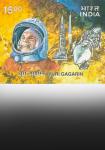The new buzzword is cooperation, not competition.
For the past five years, ever since it was set up, ONGC Videsh Ltd (OVL) has been slugging it out with its Chinese counterparts, bidding for equity in oilfields abroad.
Not very successfully, admittedly, with China National Offshore Oil Corporation (CNOOC) and China National Petroleum Corporation (CNPC) snatching up the best fields and deals almost every time.
But now, Indian delegations have visited China, exploring areas where information, research findings and strategies can be shared. India's Petroleum and Natural Gas Minister Mani Shankar Aiyar's visit to Beijing next month is likely to result in an overarching agreement of cooperation in the energy sector, with at least four or five memoranda of understanding being signed between Indian and Chinese companies.
"2006 will be the year of friendship between India and China, based on the five principles of cooperation," emphasises the minister, referring to the panchsheel agreement between the two countries.
Clearly, the rules of the game have changed. Why? The short answer lies in another catchphrase: energy security. Both countries consume far more oil than they produce, leaving them heavily dependent on imports.
According to PetrolWorld, at present, China imports over 30 per cent of its oil supplies, consuming 5.46 mi llion barrels a day (mbd); that's 7 per cent of world demand. India imports a frightening 75 per cent of its oil, using up 2 mbd.
Figures from the International Energy Agency place world oil demand in 2030 at 121.3 mbd, with China and India accounting for 12 per cent and 5.6 per cent, respectively. By then, it predicts, India's oil import dependency will climb to 94 per cent.
Meanwhile, oil prices have been on the up and up, too: from $34.69 a barrel in October 1990 (source: www.petroleumbazaar.com), to an all-time high of $70 a barrel (September 2005), to just over $57 on December 1, 2005.
In its April 2005 issue, the McKinsey Quarterly warned grimly: "Asia has limited strategic reserves which can soften the impact on prices in the event of a sudden supply shortage."
How are India and China responding to their common problem?
Given how this story has been explained so far with buzzwords, allow us one more for the answer - increasing resource nationalism.
In plain English, that means both countries are trying to gain as much control as possible over the source of the scarce resource, oil. But the gameplans of both countries have been hugely different - although that looks set to change now.
"One is a hungry dragon and the other, a dancing elephant," says an industry observer. "China has gone more aggressively in terms of pricing and risk-taking," agrees Subir Raha, chairman and managing director, ONGC (the parent company of OVL) and OVL.








 © 2025
© 2025